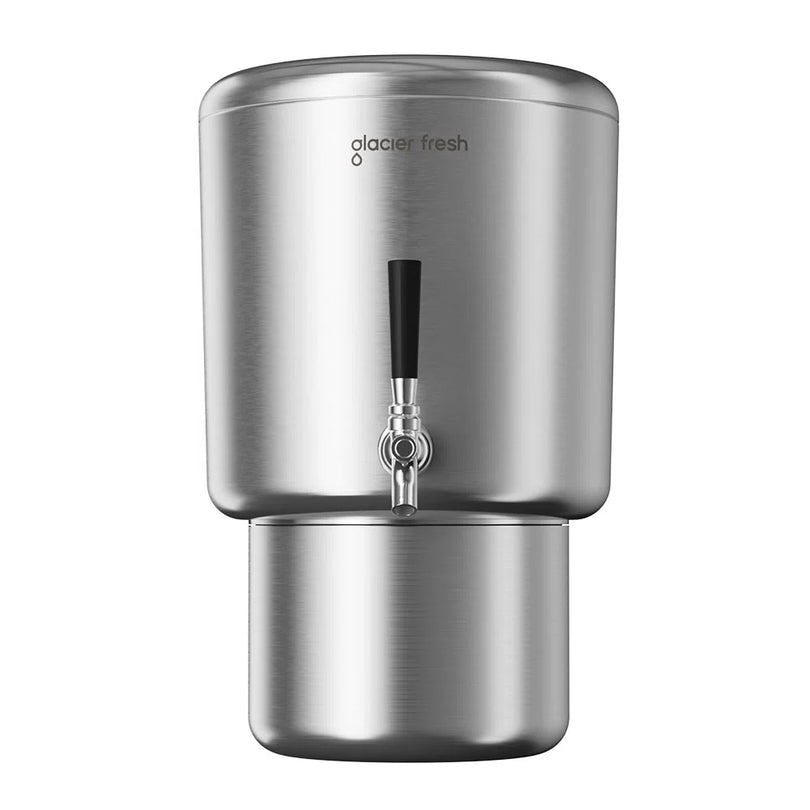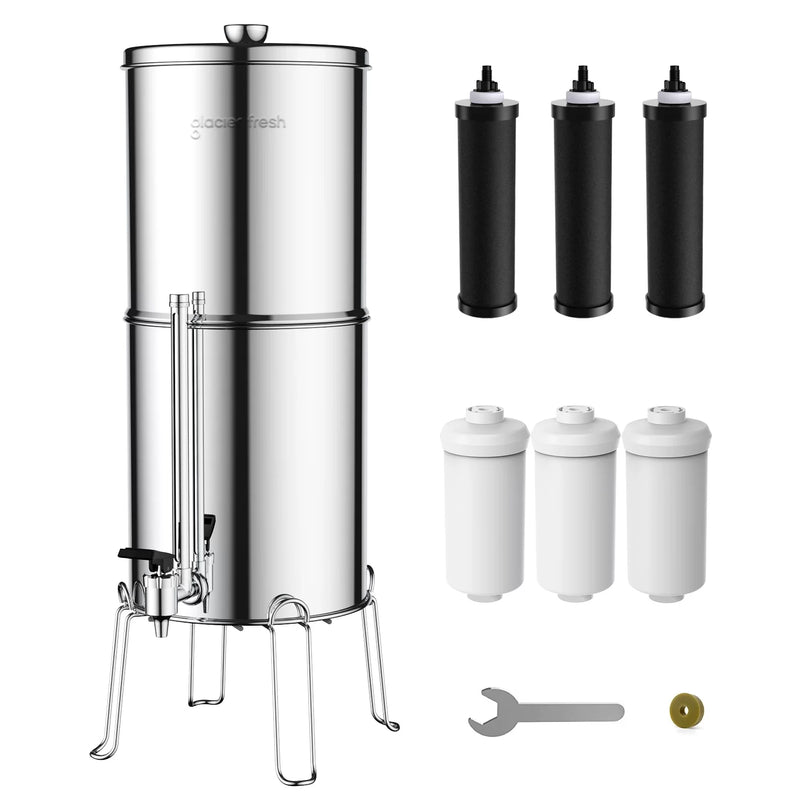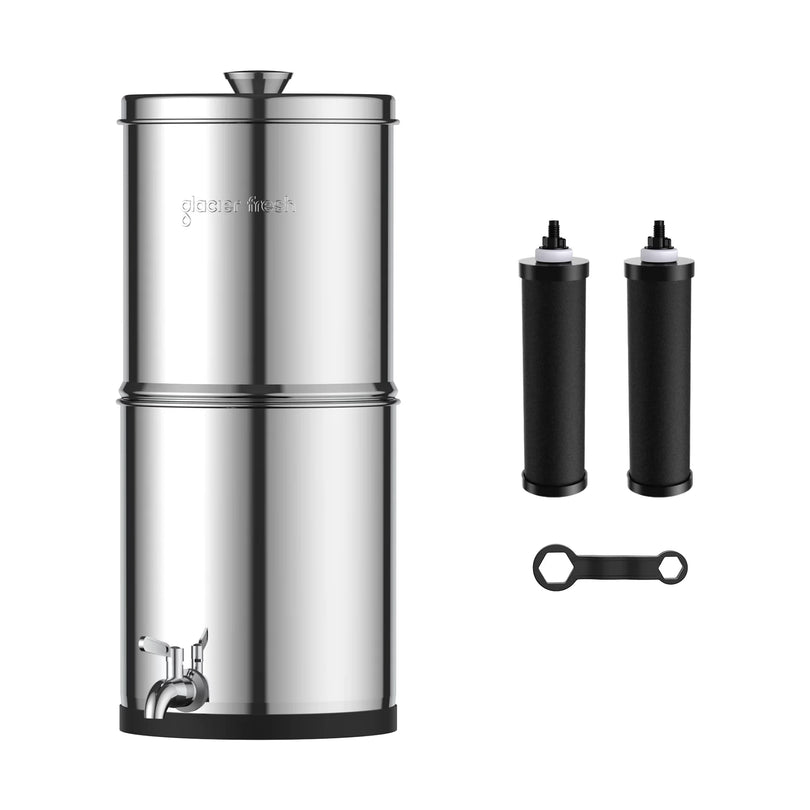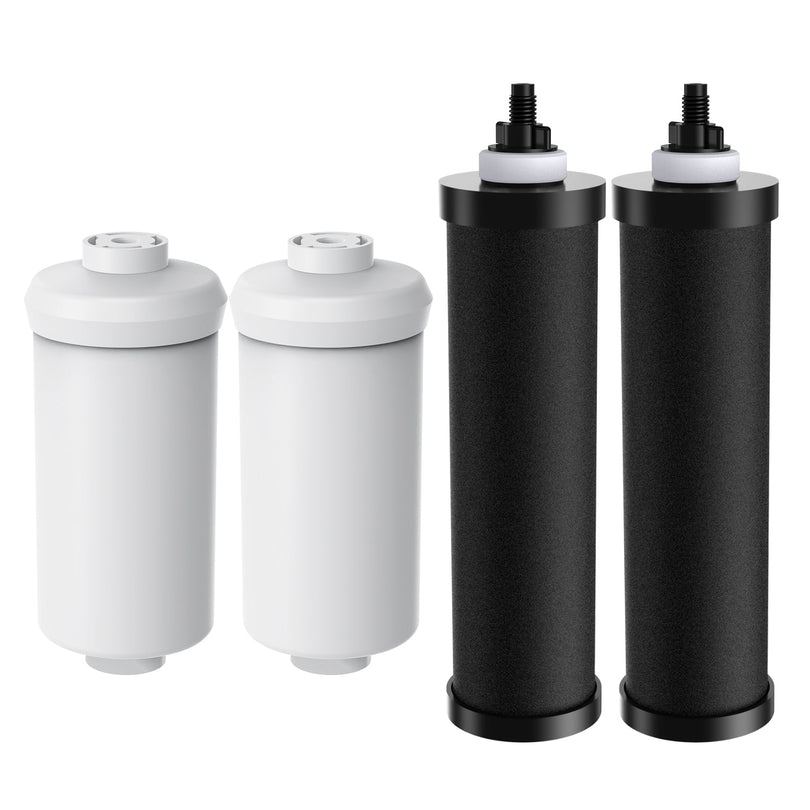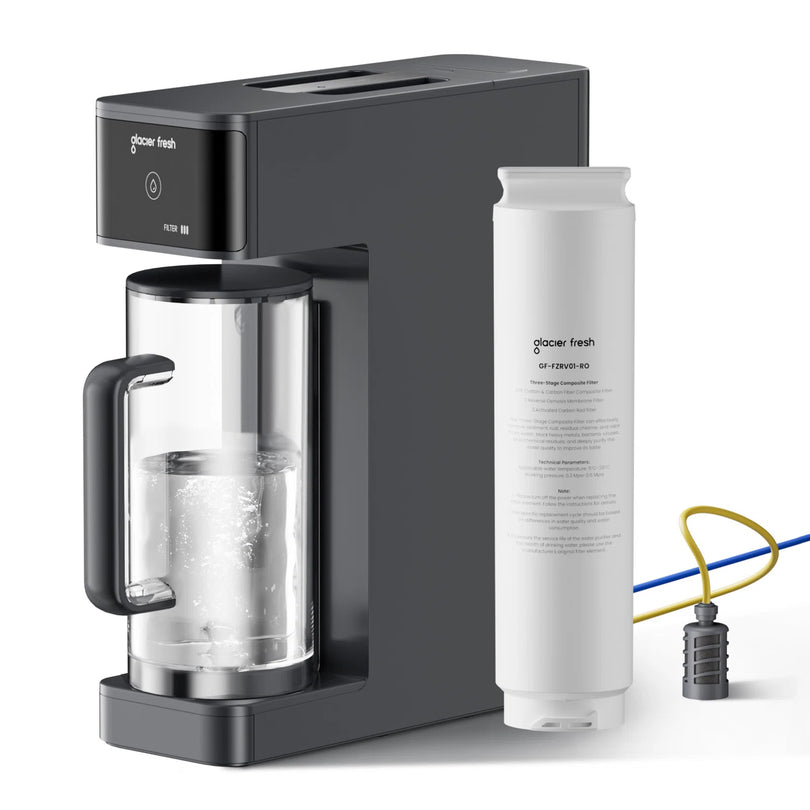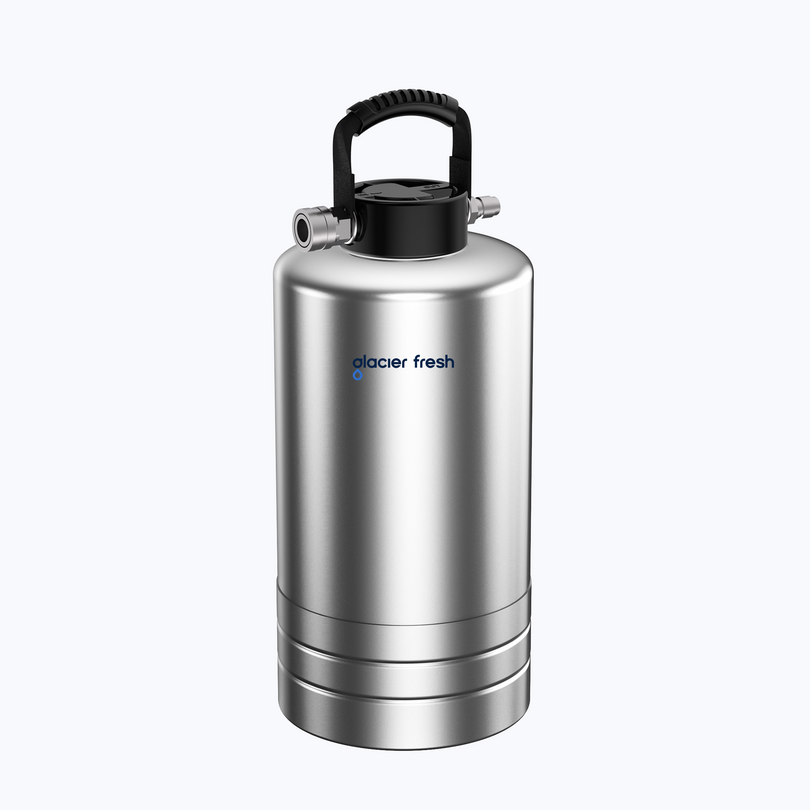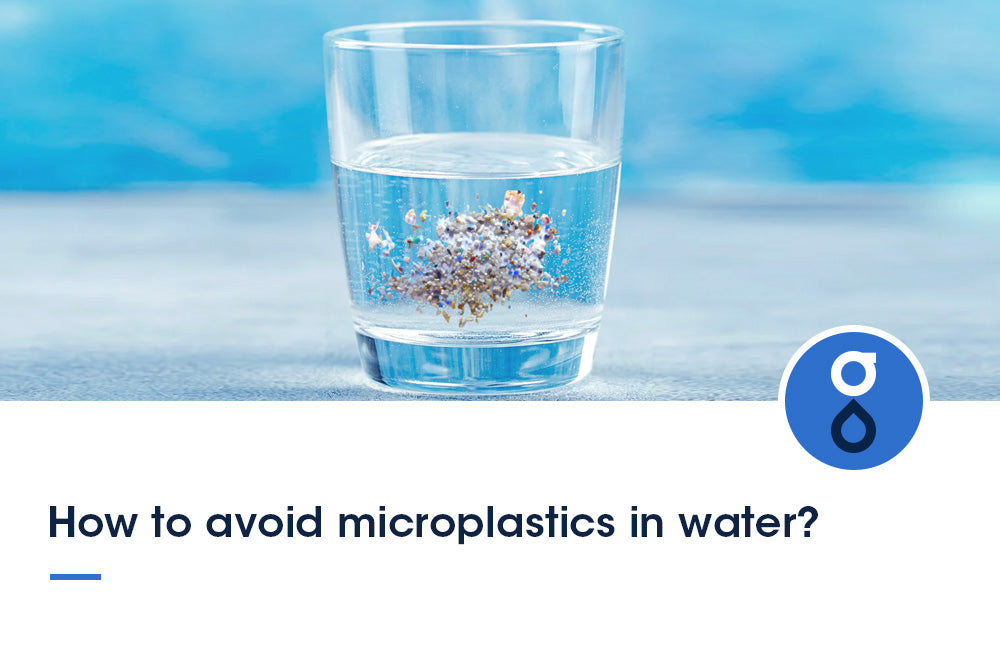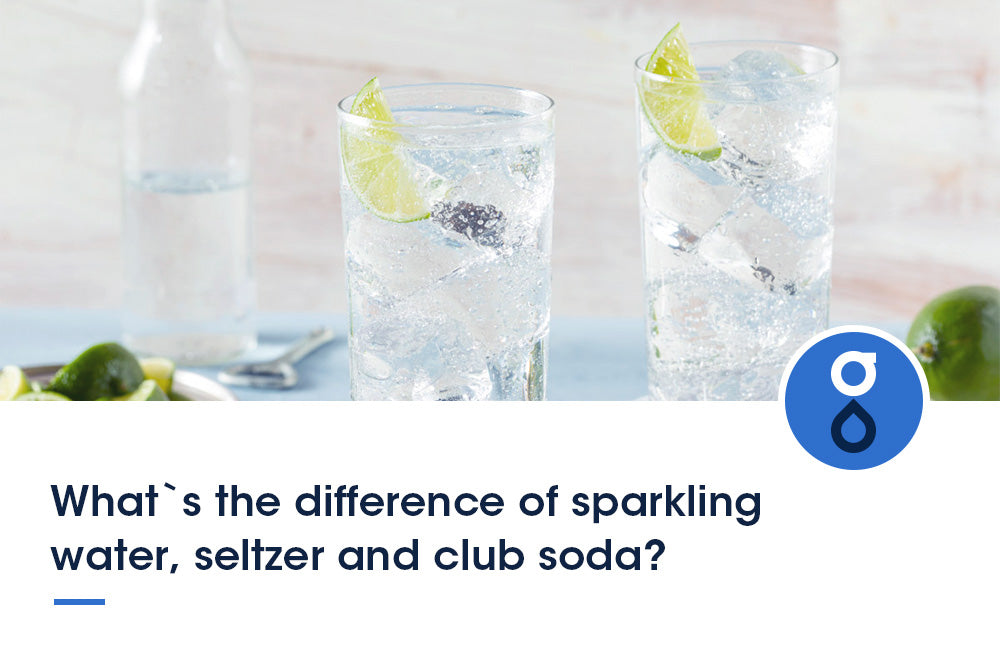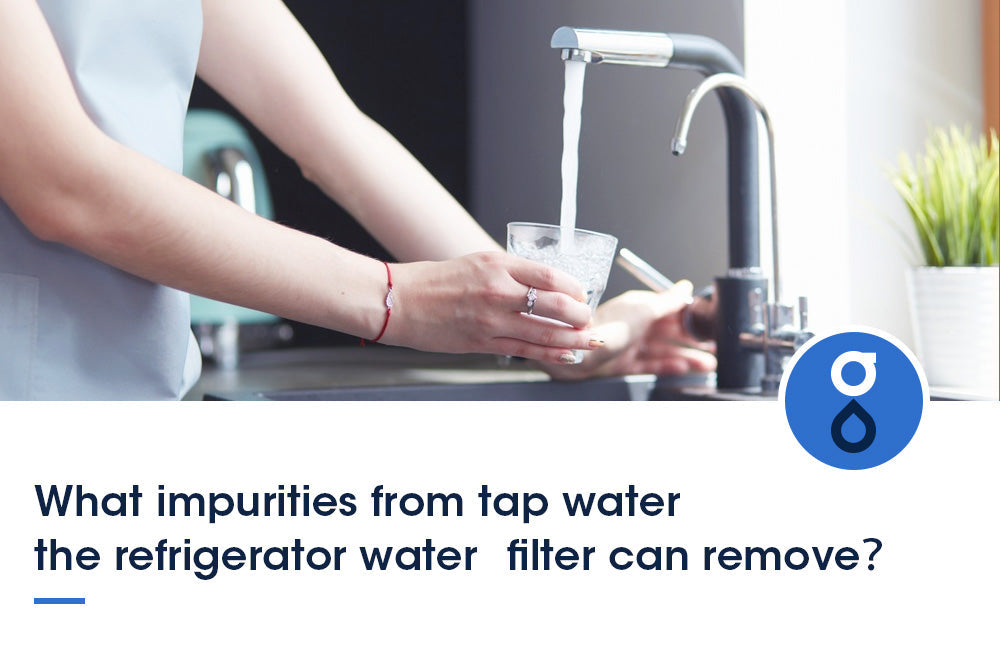Table of Contents:
What is microplastics
Types of microplastics
Potential impacts of microplastics
How do microplastics get into drinking water
Ways to avoid microplastics in water
FAQs
Conclusion
An alarming amount of microplastics are now appearing in our drinking water. From the plastic bottles we throw away to the tiny plastic fibers that come off our clothes when washed, these small pieces of plastic in our daily life have been turning up in our tap water, negatively affecting our human health. But how do they get there, and how can we avoid them? This article discusses microplastics, their potential health impacts, how they enter drinking water, and ways to prevent them. By taking a few simple steps, you can help protect yourself from these insidious pollutants and ensure your drinking water is safe for you and your family. So let's dive in - it's time to learn how to keep microplastics from your glass!
What is Microplastics?
Microplastics are small plastic debris measuring less than 5mm (0.2 in) long. They come from various sources, including the breakdown of large plastic items and fibers released from synthetic clothing when washed. Microplastics often end up in our oceans, rivers, and even the air we breathe. But they don't just stay there - they can enter our food chain through fish and other animals, eventually ending up on our plates or drinking water. Microplastics also impact the environment, interfering with photosynthesis and disrupting the food chain for fish and other aquatic organisms. As a result, it is essential to be aware of their presence and take steps to reduce their impact on our human health and environment.
Types of microplastics
Microplastics contamination are a growing environmental concern due to their prevalence in the environment and potential for harm to humans, animals, and aquatic ecosystems. Microplastics can be divided into three categories:
Primary microplastics

Primary microplastics are small pieces of plastic that are purposefully manufactured. They are usually used in personal care products like facial cleansers and cosmetics or air-blasting technology. Primary microplastics are of particular concern because they often contain additives that can be toxic if ingested by animals or humans. They can also easily break down into smaller particles, creating even more microplastics that may be difficult to detect or remove from drinking water sources. Primary microplastics can travel long distances and contaminate bodies of water worldwide – including oceans and rivers – leading to various environmental issues.
Secondary microplastics

Secondary microplastics have been broken down into more significant pieces of plastic. These microplastic particles can be formed in various ways, such as when plastic bags and food packaging materials are exposed to sunlight or wind or when animals ingest them. Secondary microplastics are particularly dangerous because they can quickly accumulate in the environment and enter waterways, where fish and other marine life can consume them. In addition to being detrimental to aquatic ecosystems, secondary microplastics can pose a health risk for humans who consume contaminated seafood. Ingestion of these microplastic particles has been linked to various health issues, including endocrine disruption and reproductive problems.
Fragmented microplastics

Fragmented microplastics are plastic pieces broken down from oversized items. These tiny microplastic particles are so small that they can be challenging to detect, but their presence in the environment is becoming increasingly common. They can enter our waterways through littering, improper waste disposal, and even by washing synthetic clothes. Fragmented microplastics pose a risk to marine life as they can accumulate toxins and harmful chemicals as they travel through the water. Once ingested, these toxic microplastic particles can cause serious health problems for animals and humans.
Potential impacts of microplastics
Microplastics are increasingly becoming a primary environmental concern due to their potential impacts on the environment, wildlife, and human health.
Effects on the environment
Microplastics can absorb toxins and harmful chemicals from their surrounding environment, contaminating waterways and entering the food chain. As they are mistaken for food by aquatic animals, they can cause digestive blockages or release toxins into the animal’s bloodstream. In addition to this, they can be ingested by birds, further disrupting the food chain. Microplastics also cause physical damage to ecosystems when they settle in large quantities on coral reefs and other wildlife habitats. The plastic particles suffocate marine creatures and reduce light penetration, damaging sensitive ecosystems and destroying essential habitats for fish, crustaceans, and other organisms.
Effects on the human body
The effects of microplastics on the human body can be devastating. Microplastics enter our bodies through the water we drink, often from contaminated tap water or polluted rivers and oceans. Ingesting them can cause various health problems, including cancer, endocrine disruption, immune system suppression, and reproductive issues. Research has also shown that toxins such as PCBs and DDT, known to be associated with microplastics, can harm brain development in children and cause severe illnesses in adults. Moreover, these plastic particles can accumulate in our organs over time, leading to chronic toxic exposure.
In addition, microplastics have been linked to increased inflammation levels throughout the body. This could increase the risk of cardiovascular diseases and other health problems caused by chronic inflammation.
Effects on the marine organisms
Microplastics are a severe threat to marine organisms, particularly those living in shallow waters or near the ocean's surface. Fish and other aquatic life can ingest these particles directly, or they can enter the food chain when small fish eat them. This is because microplastics are composed of numerous toxins, which, if consumed in large quantities, can harm these animals.
Moreover, microplastics can also cause physical damage to marine life, such as coral reefs and seabirds. The sharp edges of the plastic particles often cut into the gills and mouths of fish and their tender fins and tails. As a result, these animals suffer from reduced mobility and become more vulnerable to predators. Furthermore, these tiny pieces of plastic absorb ocean water pollutants such as lead and mercury. By doing so, they magnify the impact of these contaminants on marine organisms, which may lead to increased mortality rates among them.
How do microplastics get into drinking water?

Microplastics are found in many consumer products, such as cosmetics, detergents, and clothing, and can enter our water supply through various pathways. One primary source is the improper disposal of single-use plastics such as straws, plastic container and bags which end up in landfills or waterways where they eventually break down into smaller pieces. Microplastics can also be released directly into surface water during industrial processes or wastewater treatment plants that don’t have adequate filtration systems to remove them.
Additionally, these particles can travel long distances through air currents before settling out on water surfaces or being washed into streams, rivers, and oceans. All of these pathways lead to microplastic contamination in our drinking water supplies, making it essential to take steps toward reducing this kind of pollution.
Ways to avoid microplastics in water
Microplastics come from various sources and can end up in our water systems, posing a potential health risk to humans and marine life. So what can we do to reduce our exposure to microplastics? There are several ways to reduce the amount of microplastics that enters our ecosystems. Let's take a look at how we can make a difference.
Reducing Consumer Demand For Plastics
Reducing consumer demand for plastics is essential in mitigating microplastic pollution in water. Individuals can avoid single-use plastic products such as straws, bags, or plastic water bottles and opt for reusable items. Shopping for food and household goods using refillable containers reduces plastic waste and encourages businesses to offer more sustainable options. Furthermore, being aware of the environmental impacts associated with certain products is vital when deciding what to buy.
As many states have already done, consumers can also support legislation that bans single-use plastics. This will help reduce the amount of plastic waste entering our waterways and create a better future for generations to come. Additionally, businesses should be encouraged to make their packaging more eco-friendly and invest in research and development of biodegradable materials that are better for the environment. By adopting these individual and corporate practices, we can make a real difference in reducing microplastics from entering our water systems.
Improving Waste Management
One of the most effective ways to avoid microplastics in water is to improve waste management strategies. This can be done through better recycling, composting efforts, and education about reusing and repurposing materials. By creating more sustainable practices, people can help ensure fewer items are in landfills or water sources. Additionally, businesses should strive to make products using less plastic and packaging, as this could drastically reduce the amount of plastic pollution entering our waterways.
By investing in better waste management strategies, we have the potential to reduce the number of microplastics entering our water sources drastically. We can create a healthier planet for future generations through improved consumer education, business practices, and increased government involvement.
Utilizing Innovative Filtration Technologies

As the world increasingly turns its attention to the crisis of microplastics in water, innovative filtration technologies have emerged as a possible solution. By utilizing filtration systems like reverse osmosis system that can capture plastic particles, we can begin to take steps toward restoring clean water sources. These systems involve attaching a filter to stormwater outlets or other points where plastic particles are likely to be found.
The filters then capture and trap the particles before they enter larger bodies of water. In addition, these filters can be combined with other mitigation measures, such as removing debris and sediment from drainage systems and installing artificial wetlands to reduce runoff.
Overall, these innovative filtration technologies can help us make significant strides toward reducing microplastics in water sources. Introducing these solutions into our everyday lives can create a more sustainable future for generations to come.
Participating In Clean-Up Events
The impact of microplastics on the environment is significant and can be observed in our water sources. As a result, it is essential to take action to reduce the amount of microplastics entering these systems. Participating in clean-up events is one-way citizens can help mitigate this issue. Clean-up events are organized volunteer initiatives that focus on removing garbage from a designated area such as a beach, lake, river, or park.
These activities involve people from all walks of life who join together to do their part in keeping their local environment clean and safe. Not only does this help reduce the number of microplastics entering our waterways, but it also raises awareness about the damaging effects of pollution.
Raising Awareness About Microplastics
Raising awareness about microplastics is vital in helping prevent their spread through water. People need to understand the long-term effect of microplastics on the environment and how they can reduce their personal use of single-use plastics. Education campaigns can be used to spread the word and bring attention to this severe and growing problem.
Encouraging people to find alternatives to single-use plastics, such as bringing reusable bags when shopping or using refillable bottles instead of plastic water bottles, is a great way to reduce our reliance on these items.
Additionally, supporting businesses making efforts to use sustainable materials in their products can significantly affect the environment. Small changes that add up over time can help us all make a difference in protecting against microplastic pollution.
FAQs
Are all plastics microplastics?
No, not all plastics are microplastics. Microplastics are typically defined as plastic particles smaller than 5 millimeters. These pieces of plastic can come from many sources, including the breakdown of oversized plastic items over time and the intentional use of tiny plastic beads in products such as facial scrubs.
What can I do to avoid microplastics in water?
You can do a few things to reduce your consumption of microplastics. Start by avoiding single-use plastics and checking product labels for ingredients containing small plastic beads or glitter. Additionally, opt for fresh or frozen seafood instead of canned goods, avoid purchasing items containing synthetic fibers like nylon or polyester, and use a filter bag when washing clothing made from synthetic materials. Finally, eating more organic produce and locally sourced foods can also help reduce plastic waste associated with long-distance transportation.
Are there any local clean-up groups I could join?
Yes! If you live near a beach or river known to have high levels of plastic pollution, consider joining a local clean-up group to help remove trash and debris from the area. This is an easy way to make a difference and do your part in reducing microplastic pollution.
Conclusion
We need to act now if we want to reduce microplastic pollution. Our water supplies are at risk, and it's up to us to keep them clean. There are many ways to filter water at home to avoid ingesting microplastics. We also need to look out for products that contain the pollutant and ensure they're sustainable before buying them.
By taking these steps, we can help protect ourselves from the damaging health effects of microplastics and safeguard our environment for future generations. Let's make sure our actions today positively influence tomorrow.





